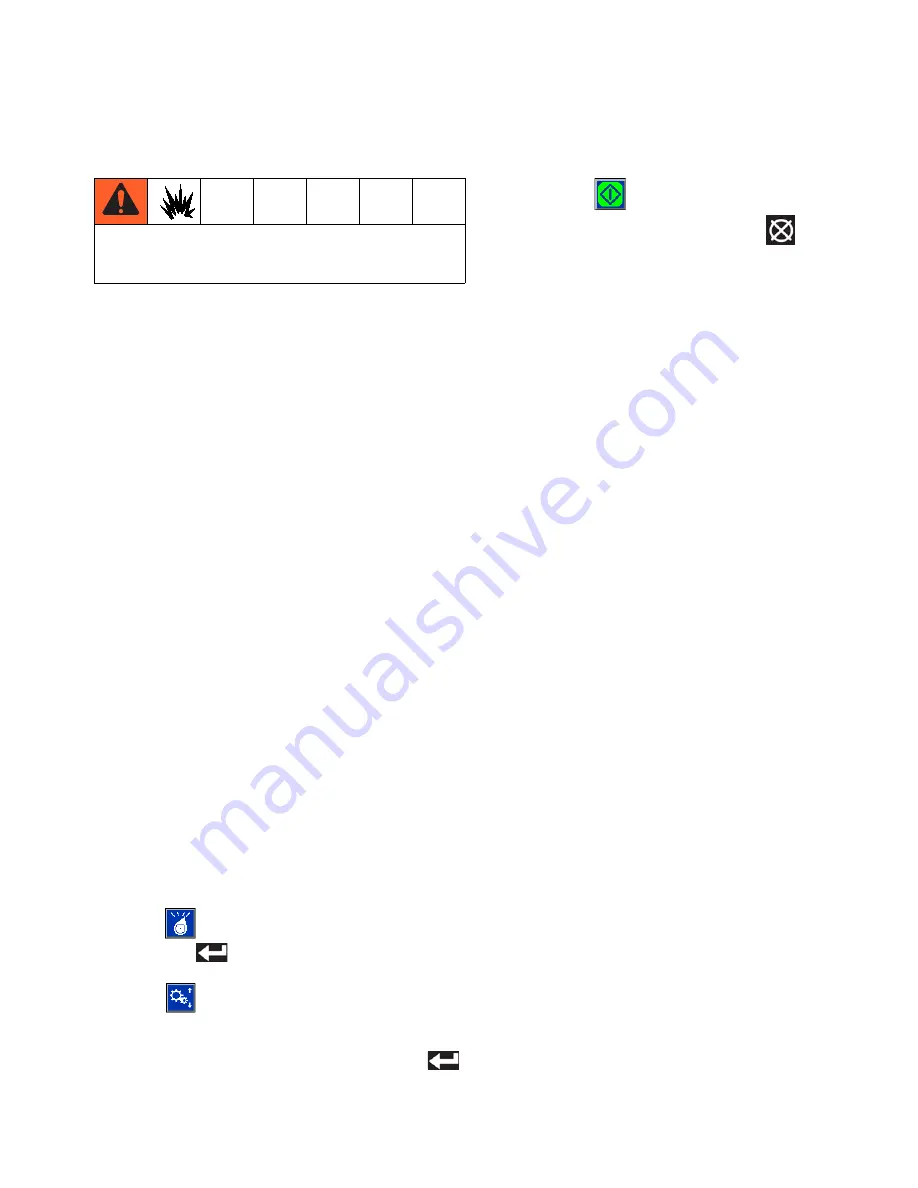
Flushing
313873J
43
Flushing
Flush out old fluid with new fluid, or flush out old fluid
with a compatible solvent before introducing new fluid.
All fluid components are compatible with common sol-
vents. Use only moisture-free solvents. See
on page 86 for list of wetted components to verify
compatibility of solvent with wetted materials. See sol-
vent manufacturers information for material compatibil-
ity. To prevent moisture from reacting with isocyanate,
always leave the system dry or filled with a mois-
ture-free plasticizer or oil. Do not use water. See
Important Two-Component Material Information
page 8.
Grounding the solvent pails used when flushing
: follow
your local code. Use only metal pails, which are conduc-
tive, placed on a grounded surface. Do not place pail on
a nonconductive surface, such as paper or cardboard,
which interrupts grounding continuity.
If flushing with a compatible solvent, perform the follow-
ing procedure.
1.
Perform
procedure, page 44.
2.
Close the feed system ball valve at inlet near the
pump lower.
3.
Connect solvent flush feed system to unused inlet
port near the pump lower.
4.
Open solvent flush ball valve.
5.
Perform
procedure, page 24.
6.
Press
repeatedly to select Operator Mode
then press
to accept.
7.
Press
to enter editing mode.
8.
Navigate to the flow rate value, change the value to
50-75% of the maximum flow rate, then press
to accept.
9.
To maintain grounding continuity when flushing or
relieving pressure,
hold a metal part of dispense
valve firmly to the side of a grounded
metal
pail,
then press
. Continue to dispense until the sys-
tem is thoroughly flushed then press
to stop
dispensing.
10. Close the solvent flush ball valve.
11. Disconnect solvent flush feed system.
12. Open the feed system ball valve.
procedure, page 25.
Flush equipment only in a well-ventilated area. Do not
dispense flammable fluids. Do not turn on heaters
while flushing with flammable solvents.
















































